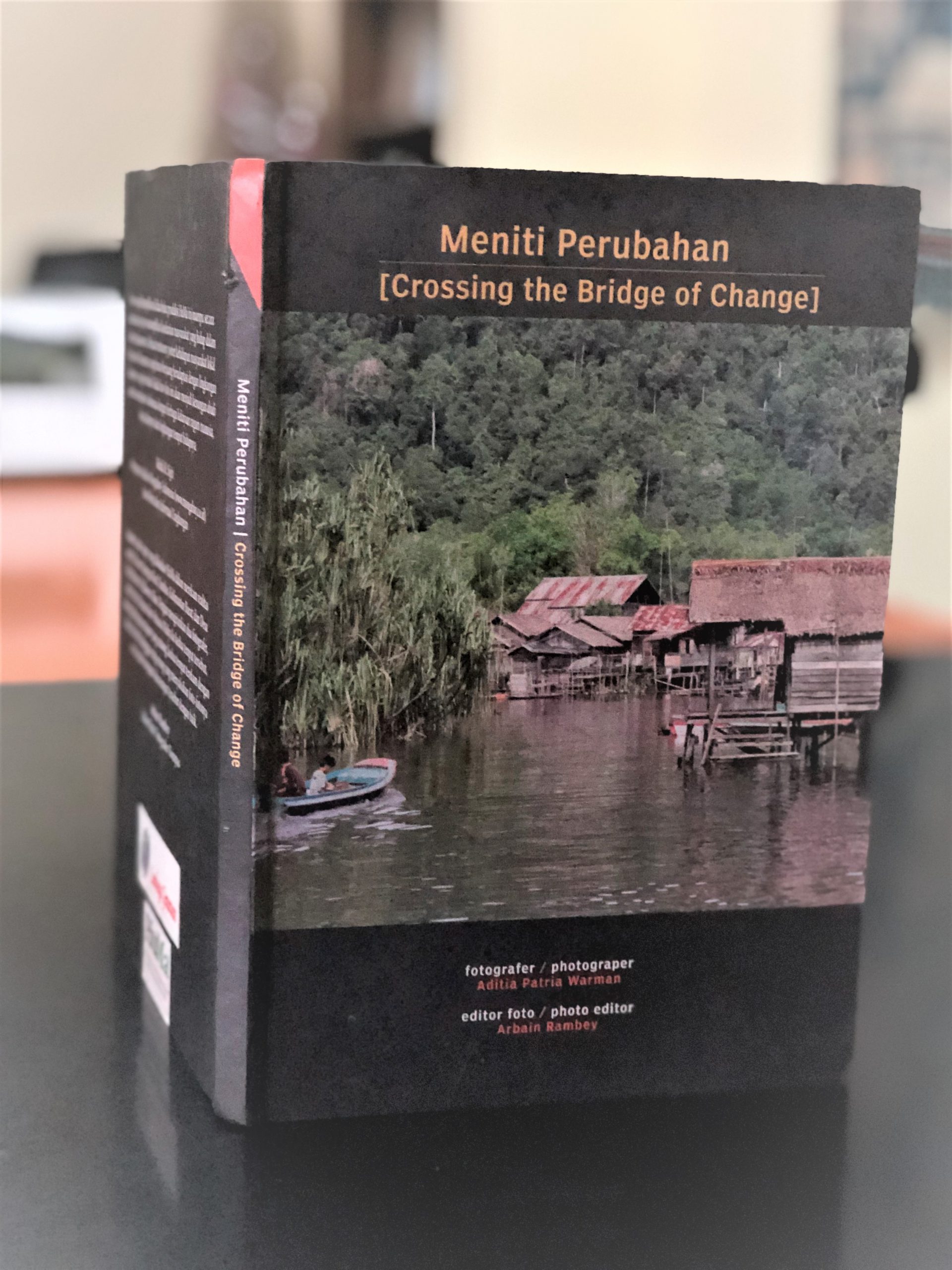The latest film series on Netflix titled Our Planet (2019) leaves us in awe. Not only are there some stunning video footages, but the visual messages make us want to love our Earth even more, especially in this increasingly vulnerable world. Visuals have become a powerful medium nowadays. Besides videos, photos also serve as an easily understandable language. Photos are a unique language to immerse ourselves in social spaces.
Through social reality photography, the Indonesian Legal Aid Foundation (HuMa) tries to convey a story about the unfair exploitation of natural resources that adversely affect communities and the environment. In this context, HuMa has produced a photo book about the forced transformation happening in the Sajingan Kecil Village, Sambas Regency, West Kalimantan.
In the early chapters of this photo book, we are presented with a view of the village that is so serene, lush, and beautiful. Its warmth greets us. On the other hand, the exploitation of natural resources and the forced rural transformation resulting from it have created a chain of impacts affecting various groups far from the center of environmental and social destruction.
In this book, we see three groups of humans based on their perspectives on nature. First, the traditional group characterized by their submissive and resigned attitude towards nature. Second, the transformation group striving to find harmony with nature. Third, modern humans aspiring to dominate nature.
The transformation becomes evident as we reach page 82. Sustainable forests are transformed by investors into oil palm plantations. Data shows that 40% of Sambas Regency has been converted into Industrial Forest Concession allocated for oil palm plantations. They say oil palms will boost the local economy. The question is, which community? It seems impossible when seeing the poverty depicted around the plantations in Sajingan. The turbidity of the river and the aridness of this area are haunting, as portrayed in the photos.
A critique of this photo book is that readers might confuse professional photos with ordinary documentation photos taken by travelers. With the advanced camera technology available today, even influencers could do it. However, this book has initiated a new database. For instance, for HuMa, which extensively documents conflict data through HuMaWin, these data now speak more vividly through this photo book.
If you agree that modern society now appreciates visuals more than text, then this photo book is perfect for you. You can download the book here.
Other publications can be accessed on the HuMa publication portal.





0 Komentar
Tinggalkan Balasan